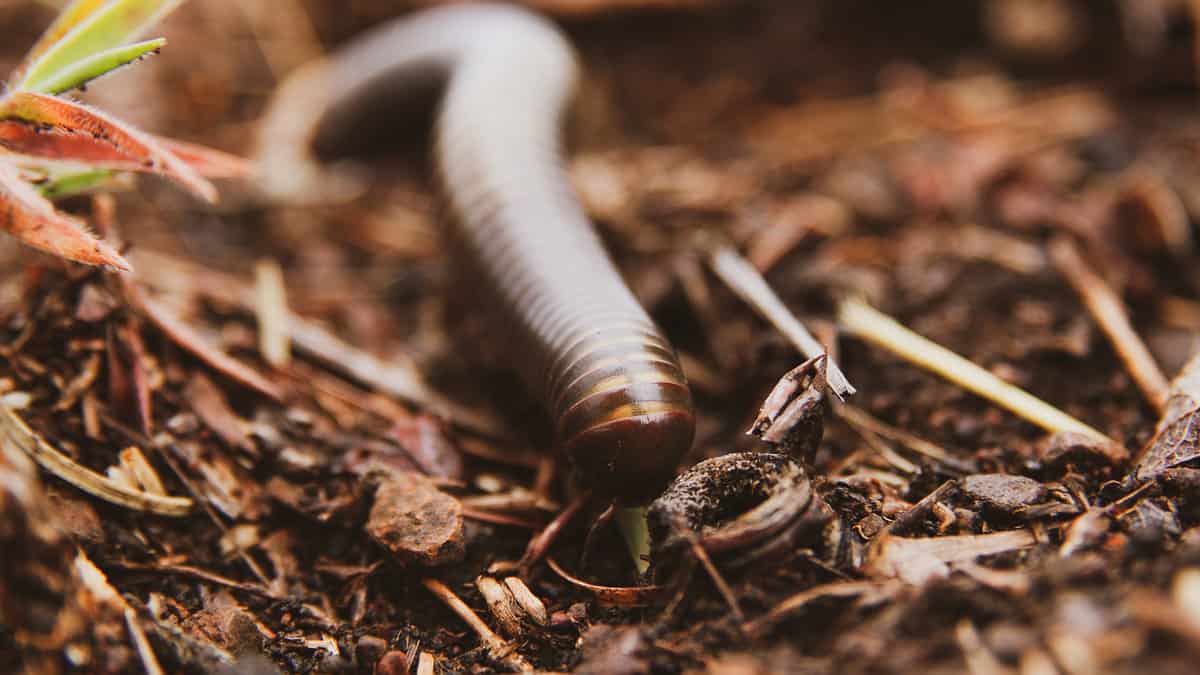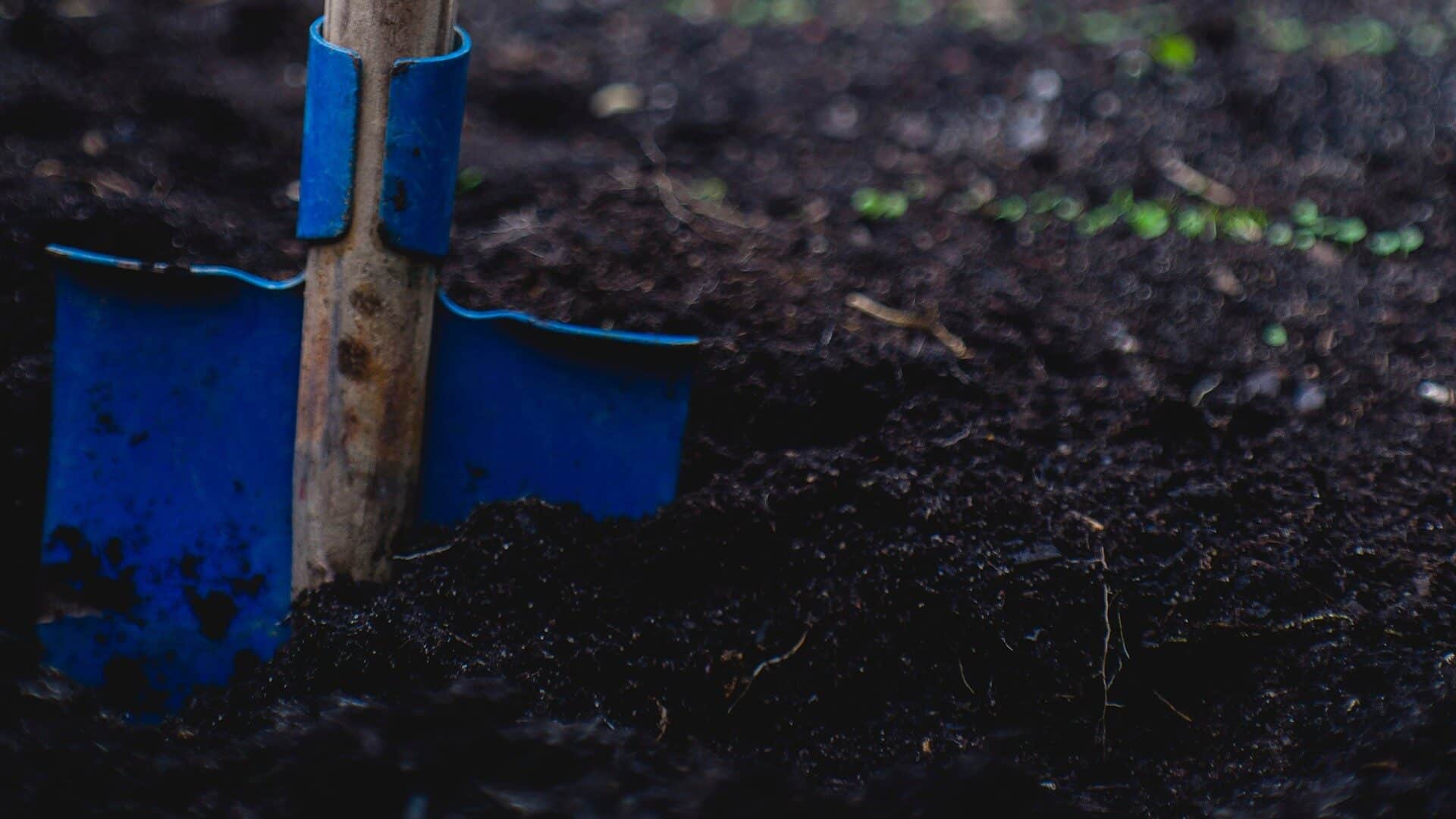Hammerhead worms can be a nuisance in your garden. They can damage plants, and they can be difficult to get rid of. In this article, we will describe the steps you need to take to eliminate these pests from your property. We will also describe the main reasons why they have appeared in your garden and how to prevent them from returning. So, if you are having problems with hammerhead worms, read on to find out how to get rid of them.
Table of Contents
What are hammerhead worms?
Hammerhead worms are a type of flatworm. They are called hammerheads because their heads are shaped like a hammer. These pests are usually dark brown or black in color and can reach up to eight inches in length. Hammerhead worms have no eyes and no segmentation in their bodies. Other names hammerhead worms go by are hammerhead flatworms and land planarians.
They belong to the phylum Platyhelminthes and the class Turbellaria. There are over 26,000 species of flatworms, but only a handful of those species are harmful to humans or animals. The most common type of hammerhead worm is the Bipalium kewense, which is also known as the New Guinea flatworm.
The reason why they are so problematic is that they are voracious predators. Hammerhead worms will consume just about anything they can find, including other flatworms, earthworms, snails, slugs, and even small vertebrates. If there is a hammerhead worm in your garden, it could wipe out your entire population of earthworms. This would be a problem because earthworms are essential for aerating and fertilizing the soil.
How do you know if you have hammerhead worms?
The most common way to know if you have hammerhead worms is by the damage they cause to your plants. Hammerhead worms will eat the leaves of your plants, and they can also burrow into the stem. This can kill your plant or make it very sick. You may also see these pests on the ground near your plants.
Where do hammerhead worms come from?
Hammerhead worms are native to tropical and subtropical regions. They can be found in Africa, Asia, Australia, and the Americas. These pests are often introduced to new areas by humans. This is usually done accidentally, such as when people move plants from one area to another. They are what is known as an invasive species. In North America, they are most commonly found in the southeastern United States.
What are the most common reasons for hammerhead worms in your garden?
There are several reasons why you may find hammerhead worms in your garden. Here are some of the most common reasons:
Flooding or Heavy Rainfall in Your Area
Heavy rainfall can cause hammerhead worm eggs to hatch. The larvae will then be carried by the water to your garden.
Moving Plants
If you move plants from one area to another, you may accidentally introduce hammerhead worms to your garden.
Eggs Hiding in Retail Plants
The eggs of hammerhead worms can often be found in retail plants. If you buy a plant that is infested with these pests, they will end up in your garden.
Composting
If you compost, you may inadvertently introduce hammerhead worms to your garden. This is because the larvae can survive in the compost and then make their way into your garden when you spread the compost on your plants.
Attracting Other Pests
Some pests, such as slugs and snails, attract hammerhead worms. This is because they are a food source for these pests.
How to remove hammerhead worms?
The best way to remove hammerhead worms is to pick them off your plants with protective gloves. This is a time-consuming process, but it is the most effective way to get rid of these pests. Here are the steps you need to take:
Step One: Look Over your Garden for Hammerhead Worms
The first step is to look over your garden for hammerhead worms. Pay close attention to the leaves and stems of your plants. If you see any damage, that is a good indication that you have these pests in your garden.
Step Two: Send a picture of the Hammerhead Worm to an Extension Agent
If you are not sure if what you are seeing is damage caused by a hammerhead worm, it is a good idea to send a picture of the pest to your local extension agent. They will be able to tell you for sure if it is a hammerhead worm and give you advice on how to deal with it.
Step Three: Pick Off the Worms using a Plastic Bag and Gloves
Once you have confirmed that you have hammerhead worms, the next step is to start picking them off your plants. It is important to wear gloves when you do this so that you don’t get them on your skin. You also want to put the worms in a plastic bag so that they can’t escape and infest other parts of your garden.
Step Four: Use Salt and Vinegar to Kill the Worms
Once you have picked all the worms off your plants, the next step is to kill them. You can do this by putting them in placing salt and vinegar in the bag. The vinegar will kill the worms and the salt will make sure they don’t come back. Seal the bag and place it in the freezer for a few days to make sure the worms are dead.
Step Five: Dispose of the Worms in the Trash
After the worms are dead, you need to dispose of them in the trash. You don’t want to leave them in your garden as they will attract other pests.
Step Six: Inspect Your Plants Regularly
It is important to inspect your plants regularly for hammerhead worms. This way you can catch them early and get rid of them before they do too much damage.
Step Seven: Call an Expert if You Have a Serious Infestation
If you have a serious infestation of hammerhead worms, it is best to call an expert. They will be able to help you get rid of the pests and prevent them from coming back. Prevention is the best way to deal with these pests.
How to prevent Hammerhead Worms from Returning?
Once you have gotten rid of the hammerhead worms, you need to take steps to prevent them from coming back. Here are some things you can do:
Keep Your Garden Clean and Free of Debris.
If you keep your garden clean and free of debris, it will be less attractive to pests. This means that you need to remove dead leaves and plant matter from your garden. You should also rake up any mulch or compost so that the larvae don’t have a place to hide.
Inspect Plants Bought from Garden Centers
If you buy plants from a garden center, it is important to inspect them before you bring them home. This is because they could be infested with hammerhead worms. If you see any damage on the plants, it is best to leave them at the store.
Stay on the Lookout for Hammerhead Worms
It is important to stay on the lookout for hammerhead worms. This means that you need to inspect your plants regularly. If you see any damage, it is best to pick off the worms and dispose of them.
FAQs
Q: What are Hammerhead Worms?
A: Hammerhead worms are a type of worm that can be found in gardens. They get their name from their unique head, which is shaped like a hammer. These pests are destructive and can cause a lot of damage to your plants.
Q: How do I know if I have Hammerhead Worms?
A: The best way to know if you have hammerhead worms is to look for damage to your plants. These pests will eat the leaves and stems of your plants, which can cause a lot of damage. If you see any damage, it is a good idea to send a picture of the pest to your local extension agent.
Q: What long does it take to get rid of Hammerhead Worms?
A: It can take a few days to get rid of hammerhead worms. Once you have confirmed that you have them, you need to pick them off your plants and put them in a bag. Then, you will need to place the bag in the freezer for a few days to make sure they are dead. After that, you can dispose of the worms in the trash.
Q: Will hammerhead worms leave on their own?
A: No, hammerhead worms will not leave on their own. You need to take steps to get rid of them.
Summary
Hammerhead worms are a type of worm that can be found in gardens. They get their name from their unique head, which is shaped like a hammer. These pests are destructive and can cause a lot of damage to your plants. The best way to know if you have hammerhead worms is to look for damage to your plants. Once you have confirmed that you have them, you need to pick them off your plants and put them in a bag. Then, you will need to place the bag in the freezer for a few days to make sure they are dead. After that, you can dispose of the worms in the trash. Doing this individually is the best way to get rid of hammerhead worms.
You also need to take steps to prevent them from coming back, such as keeping your garden clean and free of debris. If you have a serious infestation of hammerhead worms, it is best to call an expert. Prevention is the best way to deal with these pests.





